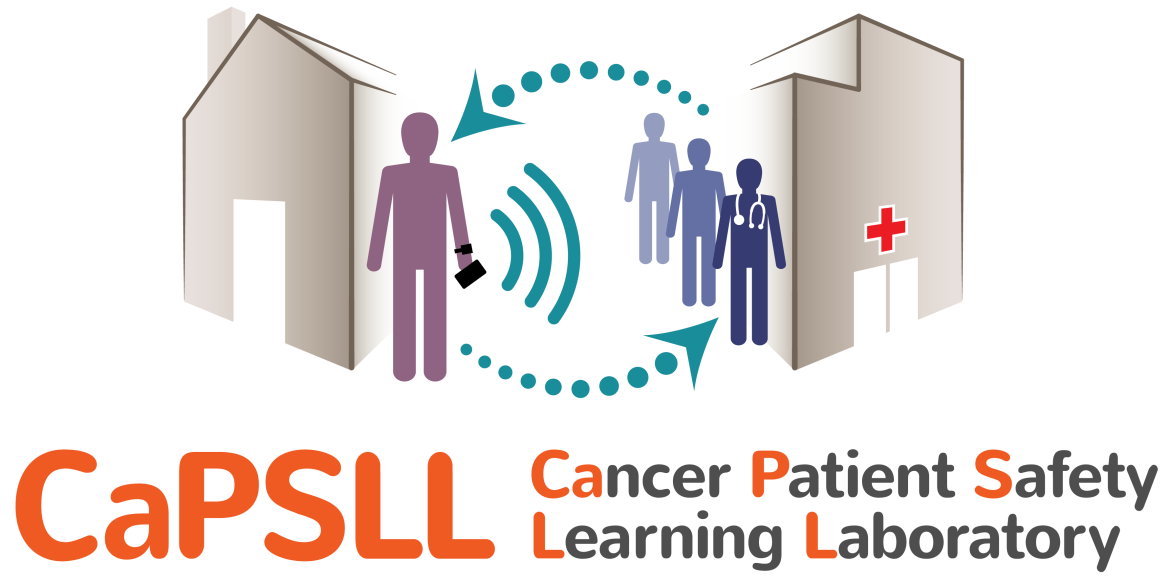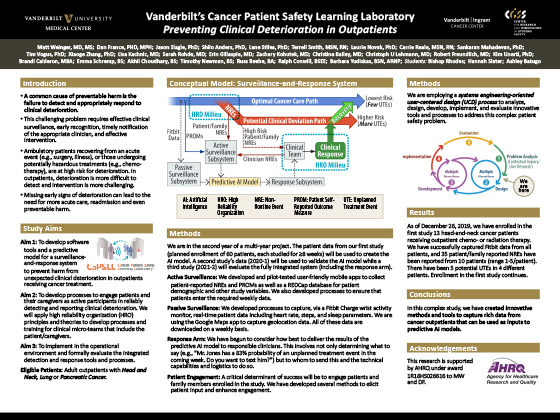CaPSLL Study Overview
A common cause of preventable harm is the failure to detect and appropriately respond to clinical deterioration. This challenging problem requires effective clinical surveillance, early recognition, timely notification of the appropriate clinician, and effective intervention. Ambulatory patients recovering from an acute event (e.g., surgery, illness), or those undergoing potentially hazardous treatments (e.g., chemotherapy), are at high risk for deterioration. Deterioration in outpatients is more difficult to detect and there is less ready access to clinical services. If early signs of deterioration are missed, leading to the need for more acute care, readmission and often preventable harm. We will employ a systems engineering-oriented user-centered design (UCD) process to analyze, design, develop, implement, and evaluate innovative tools and processes to address this complex patient safety problem.
Project Team & Contact Information

To contact the CaPSLL project team, email capsll@vumc.org, or call (615) 294-9372.
Download a PDF of the information brochure given to each participant.
Timeline & Goals
Baseline Study (Years 1-2) [60 patients, 8 weeks each]:
- Baseline patient-reported NREs and UTE data
- Initial data for creation of predictive model
Validation Study (Year 3) [60 patients, 8 weeks each]:
- Pilot test in a live environment all of the surveillance tools and associated processes
- Validate and refine the predictive model
- Collect additional baseline data on NREs and UTEs
- Test and refine the HRO-based training of both patients/caregivers and their interfacing clinicians
Evaluation Study (Year 4) [60 patients, 90 days each]:
- Conduct comprehensive clinical evaluation of the fully integrated tools and processes, including passive and active surveillance, predictive model, HRO-trained outpatient micro-care teams, and escalating response to test system performance

